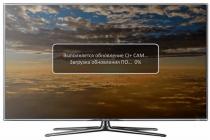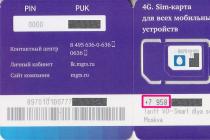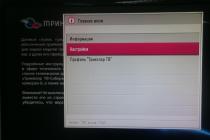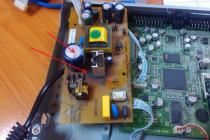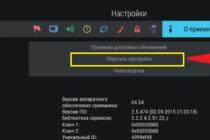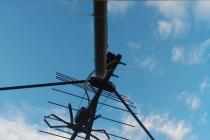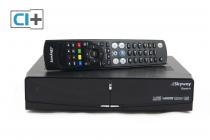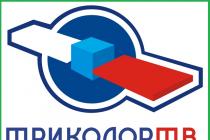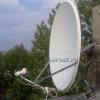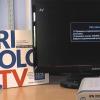Blufftitler DX9- a program for creating bright, original titles and slideshows, requires textures in its work. Textures create the background of the slide, color the fonts, and are themselves part of the slideshow composition. At the same time, the program itself is only a director and script performer, all components must do external utilities and third party programs... This collection offers programs that are tested in work with Blufftitler and are fairly easy to learn. Although the simplicity in learning and management does not mean the simplicity of their capabilities - the textures are original, bright and exclusive.
The name of the program: Blufftitler: Collection of programs for creating textures
Interface language: eng
Treatment: included
Medication type: keygen
System requirements:
Windows XP, Vista, 7 (with limitations for XP programs)
The size: 260 MB
1. Bixorama:
A program for converting panoramic photographs. Supports 11 panoramic formats: QuickTime VR .MOV, DirectX .DDS, Latitiude Longitude, Horizontal Cross, Vertical Cross, Strip, Strip XYZ, Sphere Map, Mirror Ball, Heart Shaped. Bixorama is a program for those who are fond of photography, for those who want to make panoramic shots. Using the Bixorama utility, these panoramas can be "brought to life". For example, a still 360-degree panoramic shot saved in TIFF or JPG can be compressed into a vivid panorama in QuickTime VR .MOV or DirectX .DDS format. Bixorama can also parse dynamic footage into eye-pleasing widescreen pictures.
2. Crazy Bump:
A program for creating and working with textures. It is applicable not only for creating TES4 "Oblivion" textures, but also for other games using Normals, Displacement, Specular or Occlusion maps. Allows on the basis of one digital image automatically generate several color maps, with the possibility of their subsequent editing. Here are some of its features:
1. Generation of Normals, Displacement, Specular, Occlusion, Diffuse + Editing
2. Possibility of both single and mass generation - for all textures located in the selected directory.
3. Ability to mix color cards to create additional visual effects.
4. Displaying textures, for clarity, on a simple 3d frame, as well as the ability to load models from games (OBJ, DAE, ASE, ASK, X formats are supported). Adjustable / relocatable light source.
5. The program supports 92 digital image formats, saves in 31, including Direct Draw Surfase (.dds - for Blufftitler).
3. Pixplant:
program and plugin for Adobe photoshop, used to create high-quality seamless textures from photos, is a powerful and convenient tool for creating high-quality seamless textures of any size from any images and photos. When creating a texture, you can specify whether it should be seamless horizontally and / or vertically, exclude some parts of the original image from the generation process, set repeatability, and so on. You can save a lot of time by using the technology used in the program, which will create a seamless texture in four clicks.
Features of the program:
Create unique seamless textures quickly
Based on real photos, the program creates realistic textures without any distortion
Allows to generate non-repeating textures
Creating textures in high definition and quality from the original image
Create texture from almost any photo using advanced straightening technology
High task automation
Most textures are created in 1-4 clicks
Thoughtfully designed, easy-to-use interface with online help and full-screen previews.
4. Genetica 3.5:
Genetica is a program for creating seamless and animated textures,
almost any resolution and quality, also HDRI environment maps.
In this case, the entire created structural mesh can be saved in the file
very small and edited at any time. In a programme
you can work with several modules, one of which allows you to create
textures, the second is to add various effects to them and much more.
The program has automated the process of creating textures different types- wood,
weaving, flooring, etc. The program includes more than 1000 ready-made presets for
creating seamless textures. Maps created in Genetica are automatically
are created seamless and can be rendered in any resolution.
Features of the program:
Color Only Render texture creation mode, where they are created without taking into account shadows and highlights
automation of repetitive tasks
new types of noise with settings to change them appearance.
the ability to include information about the author in the finished texture.
The latest version contains new technology to create seamless textures based on photos, added a new texture library, which includes more than a thousand elements, added new tools for removing distortions from textures, improved work with multiprocessor systems.
Treatment procedure:
Each program includes a keygen.
The only request - for the purity of the process, during installation, disconnect from the Internet. And deny updates.
Then you can turn on the Internet, the programs are simple and not confused with a complex copyright protection system.
When creating 3d models, the question arises of how to color them, you can create a texture scan in the program in which we create the model, for example 3ds Max, apply textures in Photoshop or another graphics editor, then apply a texture map to your model. But this is somewhat inconvenient, for a long time and to see the result you need to impose it on the model, and if the result is not satisfactory, redo it and re-apply it to the model. And there is another option, to use special programs for this.
TOP programs for texturing (coloring) 3dmodels.
Autodesk Mudbox
- Autodesk Mudbox- professional program for texturing 3D models. Mudbox is widely used in development computer games, films, as well as designers. The advantages of this program include an intuitive and simple interface, many different templates, brushes and tools that allow you to create realistic 3d objects and scenes. With this program you can create bump maps, displacement maps and normal maps. Mudbox allows you to work with layers, blend them, set the transparency of individual layers, etc. Good compatibility with Photoshop, Softimage, Maya and 3ds Max programs. However, for all this variety, you must have a computer with a good video card, and in general system requirements Mudbox is not small (at the time of this writing current version of the program is Mudbox 2018).
3D-Coat
- 3D-Coat- this program is adapted to work with low poly 3d models. In its arsenal, 3D-Coat has a wide range of tools for texturing models, creating unfolded textures, importing, editing and exporting a model with ready-made textures to a 3D editor. With all this, this software works quite quickly and is not demanding on computer resources. Unlike Mudbox, the 3D-Coat interface will be somewhat more complicated, despite the fact that the possibilities are slightly less.
The foundry mari
- The foundry mari- a program developed by the New Zealand company Weta Digital specifically for texturing 3D models. You can watch the works made with the help of The Foundry Mari in such films as "Avatar", "District 9" and others. The program has a fairly flexible and customizable interface, which makes the workspace convenient for each user. Another disadvantage of this program is the special requirements for the hardware. Considering the cost of The Foundry Mari (which is quite high), I think this is not the best choice, but since when writing this article I take into account the opinions of other users (and some of them consider this software to be well suited for "3D painting") , Mari in this article did not hit third place.
Zbrush
- Zbrush- one of a set of professional programs for editing 3D models. Feature of ZBrush is the ability to "clay modeling", this technology allows you to create high-poly 3D models. To make your work easier, the flexible interface allows you to customize the program as you like. If the number of brushes is insufficient, it is possible to download additional ones. The demand for computer resources and the lack of reference information are the main disadvantages of this software.
Substance Designer
- Substance Designer- one of the most powerful programs in 3D modeling, but in turn, its resource requirements are enormous. Particle-based brushes let you paint whatever comes into your head, the program is adapted to all existing game engines. Substance Designer allows you to create and edit the most complex textures (to some extent, you can even say that its possibilities in 3D modeling are endless). You have to pay for high performance in 3D graphics, and this applies not only to the price of the program itself, but also to its demands on the video card.
Conclusion
Of all the programs listed, my choice fell on the Autodesk Mudbox program, maybe someone will disagree with me (you can write in a comment), but I think this program is the most suitable for texturing 3D models, although if you do not need to work with high polygons, then 3D-Coat works great too.
Textures have become part of our lives. Designers use them to fill backgrounds or overlap objects. Textures are often used as background objects in web design. Here special requirements are imposed on them. On the one hand, to speed up loading, the HTML page together with the graphics should take up as little space as possible, on the other hand, the page often has a lot of text information, and if you use a texture the size of a page, then it will take up a huge volume. A compromise option is to use a small texture, placing it close to each other, but so that it is not noticeable. Therefore, in web design, repeating texture elements are used with smoothly flowing edges from one texture to another, i.e. so that the right edge of one texture element flows smoothly to the left edge of the other and the bottom edge to the top.
Many people use ready-made textures in their work. Have you ever wondered how they are created? After all, this is not just a set of similar items to create a background. It is important to achieve alignment of textures. To do this, you need to initially create textures in such a way that you can make a continuous texture mosaic from one repeating element, or be able to transform existing graphic elements into continuous textures. For this purpose created special programs, which will be discussed in this review.
TextureWorkshop 1.5
TextureWorkshop allows you to quickly and easily convert almost any picture into a repeating texture. The program can also be used for simple texture editing and texture color manipulation. To work with graphic elements, the program has 7 tabs:Tilize tab. Actually, this is the tab with which the program converts graphic elements into continuous textures. It sets the value in pixels that will be smoothed from each edge of the editable element to create continuity.
The Color tab sets the color of the image from original to black and white.

The Color Balance tab allows you to change the color balance of the image.

The Brightness tab allows you to adjust the brightness of the image.

The Contrast tab allows you to adjust the contrast of the image.

The Gamma tab allows you to perform gamma correction of the image.

The Special tab allows you to invert colors as well as rotate, skew, and flip the image.

In the unregistered version of the program, the Gamma and Special tabs are not available.
As already mentioned, a unique feature of the program is to create a coherent background using repeating textures. You can take any picture with similar objects (leaves, stones, grains, etc.) and, by pressing one button, turn it into a variant virtual wallpaper... You can do the same with small chunks of pre-made marble, forest, water, or fabric textures to create smooth and limitless textures.
Let's take a picture for example:

As a texture it looks like this:

We open it in the program:

After the transformation, we get:

Not perfect, but obviously much better. If you use pictures with objects of the same type to create textures, as the author of the program advises, then the transition between texture "tiles" will be invisible.
Together with the program, several blanks are supplied with the same type of objects for creating ready-made textures, on which you can practice, which we, in fact, will do. On the left (or above) the original, on the right (or below) - the finished result:












The program works under operating systems Windows 95/98 / Me / NT / 2000 / XP. The author of the program is the Russian programmer Sergey Stolbov.
The cost of registering the program is $ 25.

After registration, you can:
Use the program for more than 10 days;
Perform gamma correction;
Use the functions of inverting colors, rotating, mirroring and tilting;
Create templates of transformations with the ability to save / read to apply to various textures.
I am not a specialist in complex graphic packages, and it would be interesting for me to hear the professional opinion of designers both about this program and about alternative ways creating background sets from repeating textures.
Download TextureWorkshop 1.5 (size 1.02Mb): link
Pattern Creator 1.0

Pattern is translated from English as drawing, model, pattern, stencil. Pattern Creator is a program for creating beautiful continuous patterns, consisting of separate identical pieces connected to each other. Because the main work is for you, then this is an opportunity for you to show your creativity.
First, you need to choose the size of a single element, from which the overall pattern of the picture will then be formed. By default, the program offers a square of 100 by 100 points.

Then the program screen with a white rectangle appears in front of you, on which you, as an artist on a white canvas, can create your masterpieces. To simplify the work of novice artists, a grid is available that shows the border of individual elements.
The following tools are available to you: pen, straight lines. You can fill the picture with a color of your choice or randomly, as well as various textures in BMP and JPEG formats. You also have a full color palette and the ability to change the thickness of the lines to be applied. Any line drawn on one piece of mozaka is repeated many times on the rest, and when moving to the next piece, it also begins on the previous one and on the others.

The result is a mosaic consisting of a single, multiple repeating element. You have the option to write it in BMP format. You can also read ready-made BMP images. I'm certainly not an artist, so I ended up with a pretty simple mosaic.
I suggest you try your hand, especially since the program is absolutely free. You can freely redistribute it for non-commercial use without making any changes to it.
Download Pattern Creator 1.0 (size 2.24Mb): link
Textures Gallery Maker 1.2
Textures Gallery Maker is used to generate textures randomly. The program was born during the implementation of a quality improvement diploma project bitmaps by imposing various filters. The error resulted in an incomprehensible pattern instead of an improved image. After adding a random number generator to it, a separate program, Textures Gallery Maker, appeared.The program is very easy to use and does not require installation.

The Generate Texture tab contains all the necessary buttons for creating textures and setting generation parameters.
- the Generate button is used to create or generate a texture with given parameters;
- the Save button is used to save the created texture to a BMP, JPEG or GIF file;
- the Size button sets the size of the texture, by default 100 by 100 pixels (it is not necessary to use only square textures, try, for example, a size of 300 by 20 pixels.);
- the Color button sets the colors of the created texture;
- Smooth button sets or cancels smooth transitions between contrast points in the created texture;
- button Tile (Mosaic) turns on the display of a mosaic consisting of many identical elements of the created texture or shows only one element.
The Contrast slider is designed to change the contrast of the texture.
The Preview HTML tab allows you to see how the created texture will look with the standard 16 HTML colors. Initially, the program description page acts as a test page.
- the Open HTML button is used to open the user's HTML page in the program against the background of the generated texture;
- Button Text Clor (Text Color) allows you to change the color of the text on the open HTML-page (do not be afraid, your page will not suffer, all changes take place in a temporary copy of the page);
- The Link Color button allows you to change the color of the links on the open HTML page.

There is also a beta version of the program in development. You can see examples of textures generated by the program here.
The author will be interested to know your opinion about the program, if you want, you can vote for it at Email the author [email protected] by indicating in the subject line " useful program"or, conversely," useless program ". You can also express your comments and wishes. In addition, the author asks for help with algorithms for various graphic effects and algorithms for random generation of graphic images.
Textures Gallery Maker is free of charge. The program is written in Borland C ++ Builder 5.0. Along with the program itself, its source code is also available.
Download Textures Gallery Maker 1.2 (size 352Kb): link
Source code for Textures Gallery Maker 1.2 (size 93Kb): link
Download beta version of Textures Gallery Maker (size 353Kb): link
Rect 2
There are also two effects, Water and Glass, which can be switched on additionally. The Glass effect turns an image into a kind of oil painting, as if "smears" adjacent points, creating something like diffusion. This is best seen when using textures with squares.
The Glass effect blurs the image. The same textures with squares are unrecognizably transformed, and the fact that they were once squares is no longer recognizable.
The Background button sets the background on which the textures will be generated, since they do not always occupy the entire surface area and sometimes the background appears in some places.
The Sizes button sets the size of the generated texture: Width and Height. If you check the "X = Y" checkbox, then the width and height will be the same. Parameter (Parameter) sets a certain parameter of the generated texture, which mainly affects the size of the elements of which it consists.

The Colors button controls the amount of red, green, and blue in the texture.

Buttons Many1 (Many1), Many2 (Many2) and One (One) set the modes of the program. In Many2 mode, the entire screen is filled with the created texture, in One mode, one created texture element is shown on a black full screen background. The Many1 mode is the most convenient - it shows the entire screen filled with the created texture, and on top - the program itself, in which you can create new textures that are dynamically displayed in full screen behind the program.
The Create button is used to generate a texture. The Save button is used to save the created texture to a BMP file. The button with a question mark calls up a description of the program in Russian and English... To exit the program, use the Exit button.
Random Background works under Windows 95/98 / ME / NT / 2000.
The program is distributed free of charge. You are also free to use the textures she generated for non-commercial purposes.
Download Random Background 1.0 (size 377Kb): link
Conclusion
This article reflects various ways of creating repeating textures: smoothing the edges of finished graphic elements, drawing on the field from elements adjacent to each other, and generating textures using a computer. I am not a designer and it would be interesting for me to hear the opinions of designers both about these programs and about others. possible ways creating repeating textures.
Long ago I had the idea to create a list of useful programs which can help you design. Some of them are simply irreplaceable for game creator, and some only complement and simplify life.
I haven't found a universal list on the Internet, so I ask:
P.S. I did not write down the versions of the programs, somehow you yourself will figure out which version you like best.
Links do not always lead to file downloads.
To start:
List of game engines
3D
- Zbrush - program for three-dimensional modeling with simulation of "sculpting" 3d-model
- Mudbox - like Zbrush, only from Autodesk. Both are good in their own way.
- Autodesk 3ds Max- everything is clear. Creation of 3D graphics, animation, etc.
- Maya- ideal for creating animations. It also contains everything both for modeling and even for some simulations (liquids, smokes, flames, well, etc.)
- Blender - a nice plus is that it's free, unlike Maya and 3ds Max. It also develops as an independent game (!) Engine.
- TopoGun- a retopology program designed to build a low-poly model on a high-poly surface scanned with a 3D scanner or created in the Zbrush, Mudbox environment, and bake textures.
- Keyshot - tool for interactive visualization of 3D scenes and models
- Headus UVLayout - program for fast and high-quality UV mapping on 3D models (used by many professionals (for example Gnomon) in the games and visual effects industry)
- Unfold3D- an independent program for the automatic creation of texture coordinates for curved surfaces
- World machine- a good generator of natural landscapes. The output gives a mesh, texture, heightmap,
- Terragen - landscape generator. Creates photorealistic landscapes .
- Vue- 3D modeling and rendering program
- Speed tree modeler - generator of various trees. Useful for everyone
- Makehuman- program for generating humanoid 3d models
- Marmoset Toolbag - a small, convenient and full-fledged material editor and tool for quickly presenting three-dimensional models in real time.
- Marvelous designer - program for modeling and design of clothes. Offers built-in real-time fabric simulation and rendering engines, export functionality in common formats (Collada, OBJ / MTL).
2D
- Adobe Photoshop - I personally paint in Photoshop, I am much more comfortable there, but this is a matter of taste.
- Pixplant - a tool for creating seamless textures from photos
- CorelDraw -graphics editor, as for me, this is more suitable for artistic art. Color mixing is good.
- nDo2- plugin for Photoshop. Allows you to create maps of displacement and shadows (ambient occlusion) in Photoshop using hand drawing tools. In addition, it is possible to view a 3D preview of the resulting maps.
- Alchemy is a very good program for creating sketches. It is possible to enable both horizontal and vertical symmetry.
- ArtRage Studio - also an interesting program for drawing. For sketches / concepts, that's it.
- Sketchbook pro(also available for tablets) - drawing from Autodesk. Good for making all kinds of sketches
- Substance Designer- a powerful program that is designed to create, edit and process complex textures
- Filter forge- program and high quality plug-in for Photoshop from 4100 visual effects, 4400 textures. It also allows you to create your own filters, textures, effects, distortions.
- xNormal - creating normal maps from Color Map.
- CrazyBump- texture generator (displacement, normal, occlusion, and specmaps based on 2D images)
- Knald - analogue of CrazyBump
- Paint.NET- free raster graphics editor
- Gimp- a raster graphics editor, a program for creating and processing raster graphics and partial support for working with vector graphics.
- Inkscape- vector graphics editor, convenient for creating both artistic and technical illustrations
- GraphicsGale - free program focused on creating pixel art, including animated
- Adobe Flash - Adobe's multimedia platform for creating web applications or multimedia presentations
Voxel Editors | Voxel editors
Sound | Sound
- - free multi-platform audio editor sound files oriented to work with multiple tracks.
- GoldWave is a pretty powerful audio editor. In terms of its functionality, it can compete with such well-known programs as Adobe Audition, Sound forge etc.
- FL Studio- great for writing music, there are many plugins and different packs with sounds
- Steinberg WaveLab- professional audio recording and editing software.
- Steinberg cubase- software for creating, recording and mixing music
- Rosegarden is a free MIDI sequencer, music notation editor for Linux using ALSA and JACK, software for creating and editing music like Apple Logic Pro, Cakewalk Sonar and Steinberg Cubase.
- Sound forge is a professional digital audio production software suite that includes everything you need from raw audio to finished product.
- Adobe audition- Performs all the necessary editing and audio mixing functions. It has a very convenient navigation and interface.
- sfxr - utility for generating "eight-bit" sounds
Video | Video
Text Editors | Text editors
- Notepad ++ - free text editor with syntax highlighting for a large number of programming languages and markup.
- JuffEd- text editor for Linux and Windows
- PSPad- free text editor and editor of source code of programs, can even work with files on remote computer, via ftp, clouds
- jEdit- a text editor, has an open source code and support for the syntax of many programming languages and markup.
- ConText- a good alternative to Notepad ++
- Sublime text- fast cross-platform source code editor.
Development environment | IDE
- Microsoft Visual Studio- a set of tools designed to help developers software, both for beginners and professionals + Ghostdoc- plugin for Visual Studio, auto-documentation Resharper- add-on to improve productivity in Microsoft Visual Studio
- IntelliJ IDEA- commercial integrated software development environment in many programming languages, in particular Java, JavaScript, Python
- Eclipse - free integrated development environment for modular cross-platform applications.
- NetBeans- a free integrated development environment for applications in the programming languages Java, Python, PHP, JavaScript, C, C ++, Ada and a number of others.
- Adobe Flash Builder - software by Adobe, is an Eclipse-based IDE for building rich Internet middleware (RIA) applications using Flex
- FlashDevelop - free analogue a builder with more modest capabilities
- Olly debugger- Win32 debugger with a huge number of necessary functions, plugins and settings.
- Adobe Flash Professional- provides an environment for the development of animated and multimedia content, allowing graphic designers to compose interactive interfaces that work the same on desktops and mobile devices... Native HTML5 support included.
- Xcode- integrated software development environment for OS X and iOS
Decompiler | Decompiler
- IDA- an interactive disassembler, which is widely used for reverse engineering (the study of a certain device or program, as well as its documentation in order to understand the principle of its operation) \

